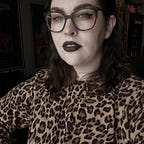Not Just in Salem: Witch Hunts in the 21st Century
The phrase ‘witch hunt’ conjures a specific image of a woman being tied to a stake and being burned alive. The image will usually feature a woman of European descent, dressed in the ragged garb of a by-gone era. This image is accurate in some ways, but in other ways it dangerously confines the scope and reality of witch hunts.
The European witch trials are often referred to as ‘The Burning Times’. A time when thousands of people, mostly women, were targeted and murdered for committing the crime of witchcraft. In reality, these women were usually innocent of such crimes, and usually played societal roles like village healer, midwife, social outcast, or town beggar. Some men were accused and murdered, and there were likely individuals that we would now recognize as transgender, nonbinary, or gender non-conforming. In North America, witch accusations and witch trials appear in the record as early as 1638, with the most infamous case happening in 1692 in Salem. Again, a vast majority of these individuals were women, and they fit the same profile as those who were accused during European witch trials.
We are at a time in history where we look back on witch trials and witch hunts as antiquated, no longer a part of our reality. Yet, up until the 1970s there was a smattering of different trials and cases. During the 1980s and 1990s we see Satanic Panic, where people are accused of Satanism and devil worship, but the language is almost synonymous with what people were accused of during older witch trials. Then, we have witch hunts that continue to happen around the world in places that are not eurocentric.
As recent as 2018 there are cases in rural China, parts of India, and other places around the globe where there are constant attacks on women, using witchcraft and superstition as a crux. Between 2000 and 2016 in India there were more than 2500 attacks on Indian women. The number is likely greater, but these are the cases in which witchcraft was specifically cited for the reason for the attacks. Similar to cases in 17th century North America, these women are accused of and attacked for witchcraft, to do things like oust women from valuable land. Witchcraft is also a convenient explanation for rising infant deaths (though in reality, the answer is disease). The reasons for accusing women for witchcraft are all but identical to those found in cases dating back to the 14th century in Europe.
Why do we ignore the fact that women continue to be hunted as witches? It is such a problem that Indian women have been pushing for laws to be passed that it is illegal to hunt someone as a witch, or to brand someone as a dakan.
We modern witches refer to European witch hunts and witch trials as the Burning Times as if we could go anywhere in the world, safely practice our craft, and not be attacked. Perhaps the context would be different, but it is disturbing that women around the world continue to be chased down, tortured, and killed for something that many people do practice every day. In some places, witches and magical practitioners are revered and their skills are utilized by members of the community, but in many more cultures and countries to be called a witch could be a death sentence. In 2019 The New York Times published an article about Gambian women discussing their experience under the reign of the former president, who ordered to torture and kill people that he decided were witches. Women have come forward to discuss how their dignity was stolen from them, and the label of ‘witches’ and ‘sorcerers’ still marks their village as a place no one wishes to go near. Yanya Jammeh, the former president who ruled for 22 years before fleeing, did a horrific amount of damage, and condemning people by calling them witches is only part of the damage done to Gambia.
Part of the damage that continues to persist because of the European witch trials is the white-washing that has occurred because of it. Witch hunts of any kind are a part of our history, and our continuing reality. While most (if not all) women and people accused and murdered because of witchcraft would be horrified to be equated to true magical practitioners, we do owe it to them to remember that they were innocent people tortured or murdered out of fear, superstition, thirst for power, and patriarchal deceit. We are responsible to recognize that the word ‘witch’ carries a great deal of power, and sometimes that power is used against people.
Witch hunts are not a thing of the past, and this blog post doesn’t even scratch the surface. They are not limited to ill-educated politicians or male-based forums that toss around the term as if it has no meaning. Witch hunts are a very real part of life for many women around the world, and it will continue to be as long as superstition and fear of female power exists. Ruth Mace wrote in 2018, “A patriarchal dimension to witchcraft accusations could also explain the prevalence of women as victims, both in traditional societies, and even in modern contexts that resemble ‘witch hunts’, such as online bullying specifically targeting women. The more research we do, the closer we can get to understanding and tackling the mechanisms behind these practices that can be devastating for women across the world.”
Sources:
Why Are Women Accused of Witchcraft?
Women In Gambia Describe Torture After Ex-President Calls Them Witches
Witch Hunts Today: Abuse of Women, Superstition and Murder Collide in India
